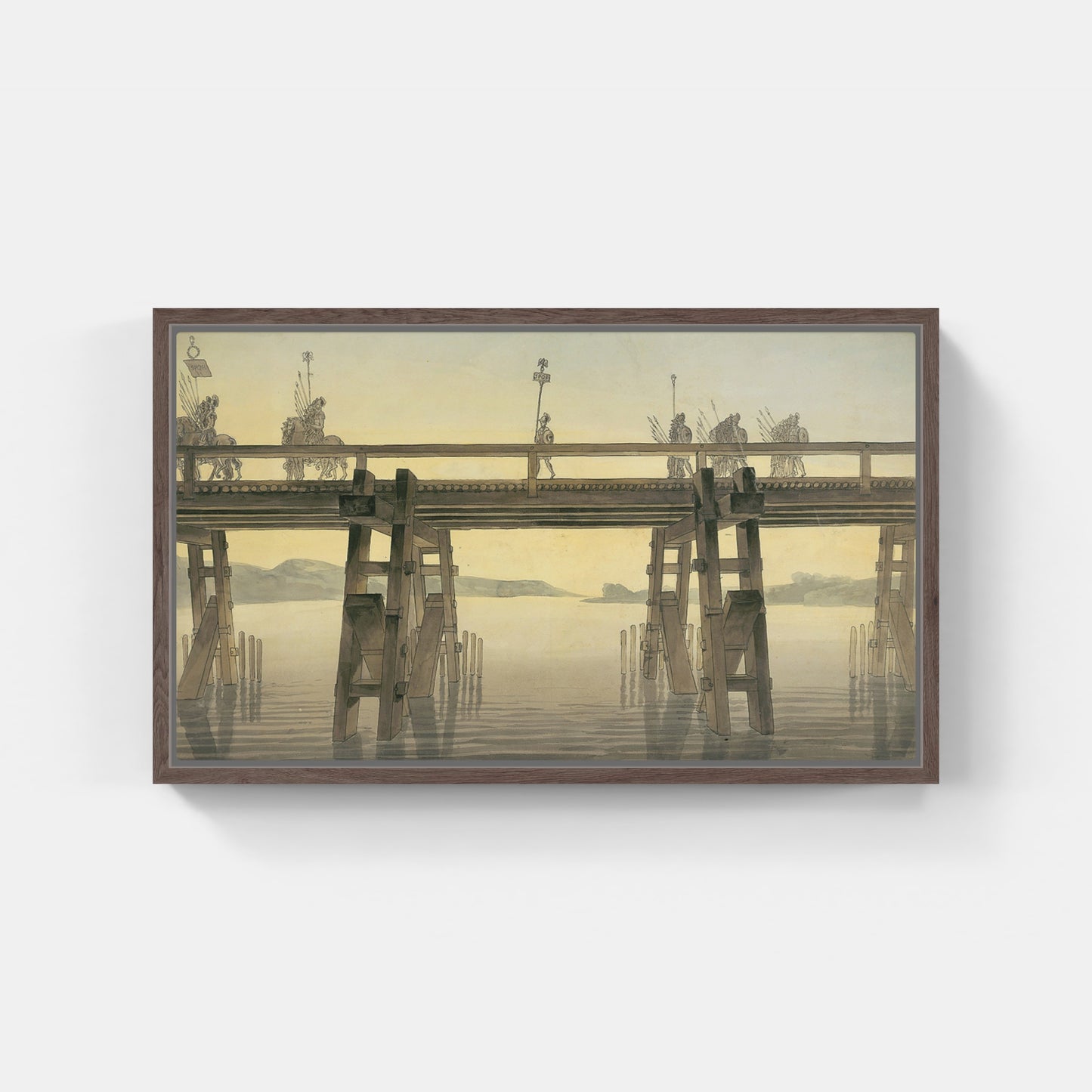John Soane's 1814 Caesar's Rhine Bridge
John Soane's 1814 Caesar's Rhine Bridge
Couldn't load pickup availability
SKU:QUYNCWHXA2D4J
WHY BUY
- Magnificent and real colors
- It makes any room elegant
- Perfect for a prestigious gift
CHARACTERISTICS
Print on handmade paper from Amalfi
Sheet size: 30 x 42 cm
Material: work printed on very fine handmade Amalfi paper with fringed edges
Print on handmade Amalfi paper with frame
Sheet size: 30 x 42 cm
With frame: 32 x 44 cm
Material: work printed on very fine handmade Amalfi paper with fringed edges, handmade beech wood frame
Print on pictorial canvas
Measurement: 80 x 60 cm
Material: work printed on very fine grain pictorial canvas
Frame: Light brown beech wood and handmade wood pulp
DO YOU WANT INFORMATION ON THE PRODUCT? CHAT WHATSAPP WITH A CONSULTANT
The work
John Soane's painting, created in 1814, depicts a wooden bridge spanning a rushing river. The scene is dominated by the bridge itself, which extends diagonally across the canvas, taking up most of the pictorial space. The bridge is made up of a series of wooden beams arranged in parallel, supported by pillars driven into the river bed. Its structure appears solid and imposing, despite the strength of the current flowing beneath it.
A small procession of human figures moves on the bridge, barely distinguishable due to the distance and the dim light. These are Roman soldiers, marching towards enemy territory. Their presence underlines the strategic importance of the bridge, which allows you to cross an otherwise impassable river and penetrate hostile territory.
The background of the painting consists of a hilly landscape, which opens towards the horizon. The vegetation is lush and green, dotted with tall trees. The sky is cloudy and threatening, creating an atmosphere of tension and drama.
Style and technique
Soane was an architect and designer, as well as a painter. His painting style is characterized by geometric precision and meticulous attention to detail. In creating it, Soane employed a very elaborate painting technique, using a rich and nuanced color palette. Light is used with great skill to create an effect of depth and realism.
Historical significance
The bridge depicted in the painting is the wooden bridge that Julius Caesar had built over the Rhine in 55 BC, during his second campaign in Gaul. This bridge represented an extraordinary engineering feat for its time and allowed Caesar to surprise the Germans and achieve a decisive victory.
Soane's painting is not only a faithful representation of a historical fact, but also a reflection on the power and glory of the Roman Empire. The bridge represents the strength and determination of Rome, its ability to overcome any obstacle and impose its will on the conquered peoples.
How reproductions are made






Scopri i pregiati materiali di Trizio Editore
Carta di Amalfi fatta a mano, cornice in legno di faggio e vetro museale. Guarda i particolari dei prodotti che renderanno la tua casa più elegante e preziosa.




